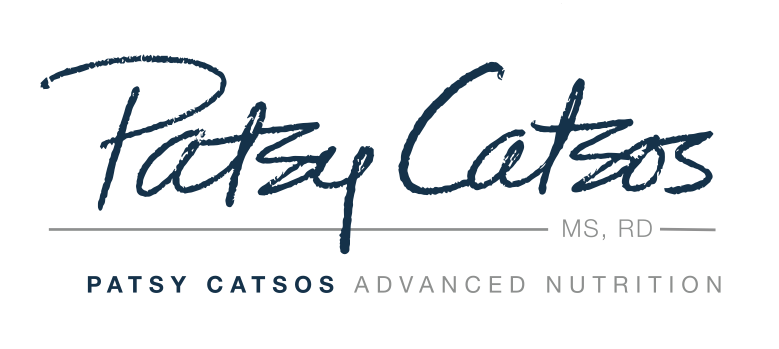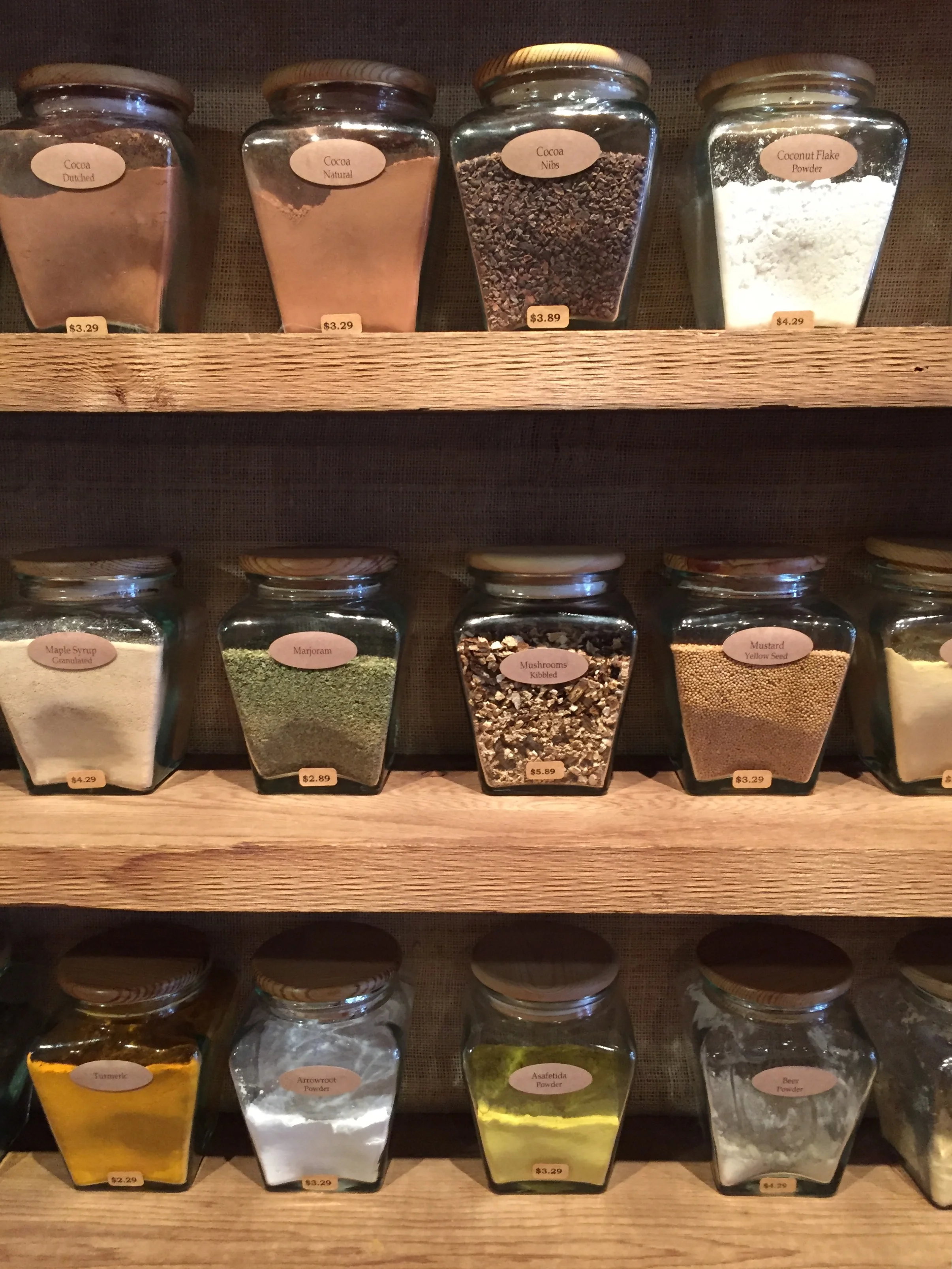Custom House, Portland, ME, 2003. One of a series of 25 paintings of Portland landmarks, with watercolors, on a particular type of watercolor paper, all 6-inch square, and framed similarly. Choosing to work within this set of parameters was liberating.
Low-FODMAP cooking demands creativity in the kitchen, since traditional uses of onions and garlic are off limits. In some ways, recipe development with low-FODMAP ingredients reminds me of my art-making days. Instead of shooting off in every direction, I would deliberately choose a set of parameters to work within. How might I improve my pottery throwing and hand-building skills if I chose to work with only one type of clay and one set of glazes for the next year? Could I grow as an artist if I chose to develop a series of paintings using a limited color palette, type of subject, paper and format? I did not experience these choices as limitations, but as liberations. No longer distracted by having to choose from among too many “ingredients,” I experienced more creative freedom and achieved mastery of technical skills.
Cooking savory low-FODMAP dishes can be approached in the same spirit. Without routine use of onion and garlic, we are challenged to bring techniques and ingredients into the spotlight.
Start by choosing the right basic recipe. Some recipes lend themselves to low-FODMAP diets more easily than others. For example, French onion soup may be a non-starter, but soups featuring the flavors of beef, chicken, fish, greens, squashes, or tomatoes might work well.
Use fresh ingredients for seasoning your food. Fresh herbs and other flavorful ingredients create amazing flavor and aroma, and convincingly authentic ethnic dishes.
Fresh ginger. Dried, ground ginger cannot compare to the taste of fresh ginger, which is easily purchased at grocery stores. Look for a plump, unwrinkled piece. Break some off if the available pieces are way too big. At home, peel the ginger by scraping it with a spoon, or using a paring knife. Grate it, or finely chop it, with a large knife. Divide leftover ginger into small foil packets, and freeze it for future use.
Fresh lemon juice. Yes, you can purchase bottled lemon juice, the best of which is sold as organic lemon juice, “not from concentrate.” Bottled lemon juice will work technically in any recipe. However, the bottling process seriously dulls the flavor of the lemon juice. Get yourself a small wooden reamer, to juice your own lemons. I’ve used many lemon juicers over the years, and this inexpensive, low-tech tool is the “keeper.” Purchase lemons that feel heavy for their size. Scrub the outside of the lemon, then cut it in half with a sharp knife. Cupping half a lemon in one hand over a bowl, use the reamer in the other hand to loosen the juice from the lemon. Squeeze the lemon and twist the reamer as needed to get all the juice out. Pick seeds out with a fork, but don’t worry about any lemon pulp that might be in the juice.
Fresh herbs. Fresh herbs can get expensive if you just use a little bit and leave the rest in the back of the fridge to spoil. Plan to use the rest right away. Purchasing some fresh basil, parsley or cilantro for a recipe? Buy ingredients for a low-FODMAP pesto or chimichurri at the same time, to use up the leftover herbs. Once such sauces are prepared, they freeze quite well in small containers for future use, even though you can’t just stick the leafy herbs themselves into the freezer. Some herbs, such as rosemary, thyme and mint, dry well. Spread them out in a single layer on a plate until dry, then store in an airtight container for future use. During the summer months, if possible, keep a small herb garden, so that you can indulge in fresh herbs at a moment’s notice and for minimal cost.
Use techniques that boost flavor without FODMAPs. Toasting, roasting, grilling and braising are easy techniques for building flavor. When foods are browned by one of these cooking methods, their flavor becomes deeper and more complex. Toast nuts in the oven on a baking tray or in a skillet on the stovetop before using them in salads. Roast or grill vegetables such as squash, potatoes, eggplant, or carrots before adding them to soups or stews. Try fire-roasted canned tomatoes in your soups, chilis and salsas. Braise meat or chicken on the stovetop before adding it to crockpot recipes.
Move outside your culinary comfort zone. Have you noticed that many low-FODMAP recipes are adapted from the ethnic cuisines of faraway places like Asia, Africa, the Middle East and South America? These recipes offer the opportunity to sample savory spices and seasonings that you might not have tried before. Several of my favorite low-FODMAP secret weapons were new to me just a few years ago, such as smoked paprika (from Spain and Portugal), and asefetida or fenugreek, which are popular in Indian cooking. Not sure you want to take a chance on buying an expensive spice you might not like? Get your hands on just a small amount by borrowing some from a friend, splitting a purchase with someone or buying just as much as you need from a bulk bin at the grocery or health food store. Spices lose their potency over time, so purchasing small quantities makes sense in any case.
Redefine certain higher FODMAP fruits and vegetables as condiments. Dried cranberries, raisins, avocados and artichoke hearts are foods that I don’t recommend consuming in normal fruit or vegetable portions on a low-FODMAP diet, but small amounts can be used to garnish food as long as you don’t stack up too many of them in one meal or snack. Try 1 ½ to 2 tablespoons of these items as garnishes.
No post about savory low-FODMAP seasonings would be complete without reference to the use of scallion greens, leek greens or chives to replace onions in your recipes. Onions contribute both flavor and bulk to recipes, so a two-prong substitution is usually required. To replace one cup of onions in a recipe, I often use ½ cup of scallion greens for the flavor and ½ to ¾ cup of a low-FODMAP vegetable such as yellow bell peppers, cucumbers or fennel bulb to substitute for the onion’s volume. Garlic-infused oil is now a familiar substitute for the flavor of garlic in your low-FODMAP recipes. Commercial garlic-infused oil can be purchased or made at home. Home-made garlic infused oil should be used or frozen within 4 days. If preparing a large batch does not seem practical, a small amount can easily be prepared as you begin cooking: For any stovetop recipe, simply begin by sautéing some garlic in oil until it begins to brown. Remove the garlic before adding other ingredients, and you’ve done it—garlic infused oil! The same technique works with onion (maybe a way to use up the scallion bulbs you’ve got leftover!). And don’t stop there! You can infuse oils with herbs, too.
Update 10/2020: There are a number of new FODMAP-Friendy or Monash-certified low FODMAP products to bring the flavors of onions and garlic back to your kitchen. Consider trying Gourmend Garlic Scape Powder, FreeFOD Low FODMAP Garlic Replacer, Free FODMAP Low FODMAP Onion Replacer or Smoke n Sanity Essence of Garlic Salt. Gamechangers!
After you’ve completed the program in The IBS Elimination Diet and Cookbook (Harmony Books, 2017), you may find that you can tolerate minor or incidental amounts of onion or garlic in your food, even when large portions are symptom triggers for you. If that’s the case, I encourage you to enjoy them as tolerated!
Here is a recipe from Flavor without FODMAPs (Pond Cove Press, 2012) that I think you might enjoy, using some of my favorite low-FODMAP secret weapons.
JERK MARINADE
This is a zingy marinade for whatever is going on the grill. Adapted from a recipe by Laura Molgaard.
INGREDIENTS:
¼ cup chives, snipped
1 red chili pepper, minced (optional)
juice of two limes
3 tablespoons olive oil (or garlic-infused oil)
2 tablespoons tamari
1 tablespoon sugar
2 teaspoons black pepper
¾ teaspoon nutmeg, freshly grated
½ teaspoon ground cinnamon
PROCEDURE:
Puree all ingredients in a blender.
Store in a covered jar in the refrigerator for up to 2 days before using to marinate chicken, pork, or fish for the grill. Discard marinade after use.
Serves: 6
For a printable PDF version of this recipe, click here.
This page may contain affiliate links. We are a participant in the Amazon Services LLC Associates Program, an affiliate advertising program designed to provide a means for us to earn fees by linking to Amazon.com and affiliated sites.








